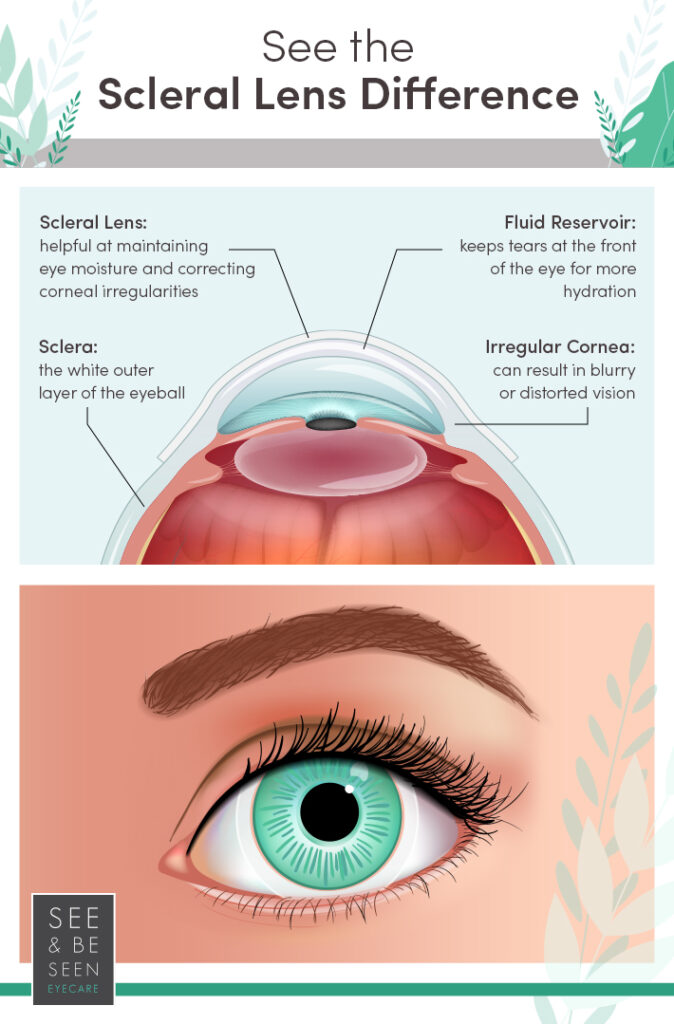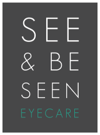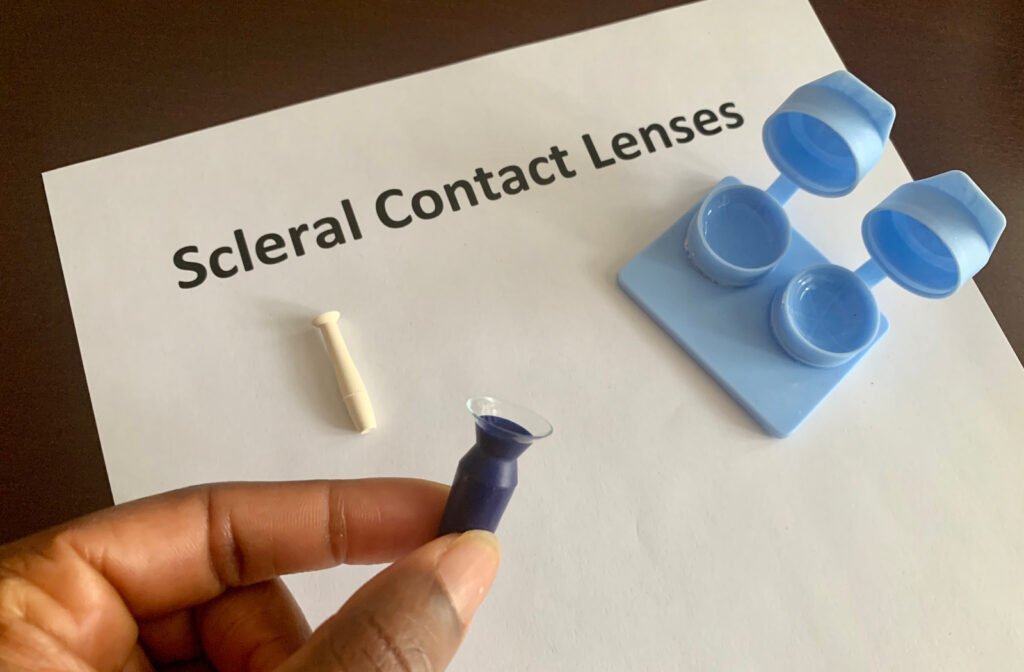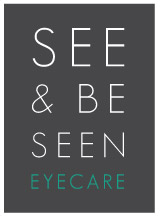Contact lenses may be small, but they can make a big impact on your vision.
With advancements in contact lens technology, specialized lenses like scleral contact lenses may be the answer if you’ve previously found conventional contacts uncomfortable or the wrong fit for your eye.
A detailed contact lens exam and fitting is a great option to have a knowledgeable eye doctor recommend the right contact lenses for your unique eye needs.

How Do Scleral Contact Lenses Work?
Contact lenses help treat refractive errors. A refractive error occurs when the length of your eyeball is too long or short, or there is a change in the shape of the cornea, and light can’t properly focus on the retina.
Standard contact lenses rest on the cornea, the clear protective outer layer of the eye, to correct refractive errors and improve your vision.
Scleral contacts differ because they are larger in diameter to cover the entire surface of the cornea and sclera (the white of the eye), and fit to leave space between the lens and the cornea. The space acts as a fluid reservoir to maintain moisture. Scleral contact lenses create a smooth surface to correct vision problems.
The Benefits
There are many benefits to choosing scleral lenses. The extra coverage they provide can help with comfort and control certain eye conditions. These benefits include:
- Dry eye relief — scleral lenses provide a space between the cornea and the contact lens. The space keeps tears at the front of your eye for more hydration throughout the day.
- Corrects astigmatism — scleral lenses can correct the irregular shape of the cornea that causes astigmatism. These contact lenses are more stable and won’t rotate due to their size.
- Corrects keratoconus — keratoconus occurs when your cornea bulges outwards. Scleral lenses don’t touch the cornea and rest on the less sensitive area of the sclera. The curve of the lens corrects the shape of the cornea, and light can focus better on the retina.
Scleral lenses provide comfort and visual acuity while protecting the health of your cornea and delaying the need for surgical intervention.
Types of Scleral Contact Lenses
Scleral lenses are highly breathable gas permeable lenses that allow oxygen to pass through. There are 3 different types of scleral lenses based on size and the primary contact where they rest on the eye. These 3 types include:
- Corneo-scleral lenses and semi-scleral lenses — approximately 13–15mm in diameter and rest near the junction between the cornea and sclera
- Mini-scleral lenses — typically 18mm or smaller covering the entire surface of the cornea and rest towards the front of the sclera
- Full scleral lenses — up to 24mm in diameter providing the greatest clearance between the lens and the cornea
For reference, the size of standard contacts is 9–9.5mm. Because scleral contact lenses are larger, they provide more stability. During a contact lens exam and fitting, your eye doctor will determine the right size and type of scleral lens for you.

Who is a Good Candidate?
Those with irregular corneas, dry eye symptoms, or hard-to-fit eyes make great candidates for scleral contact lenses that standard contact lenses don’t work for. See & Be Seen Eyecare offers solutions for your unique eyes. Ask about scleral contact lenses at your next eye exam.




